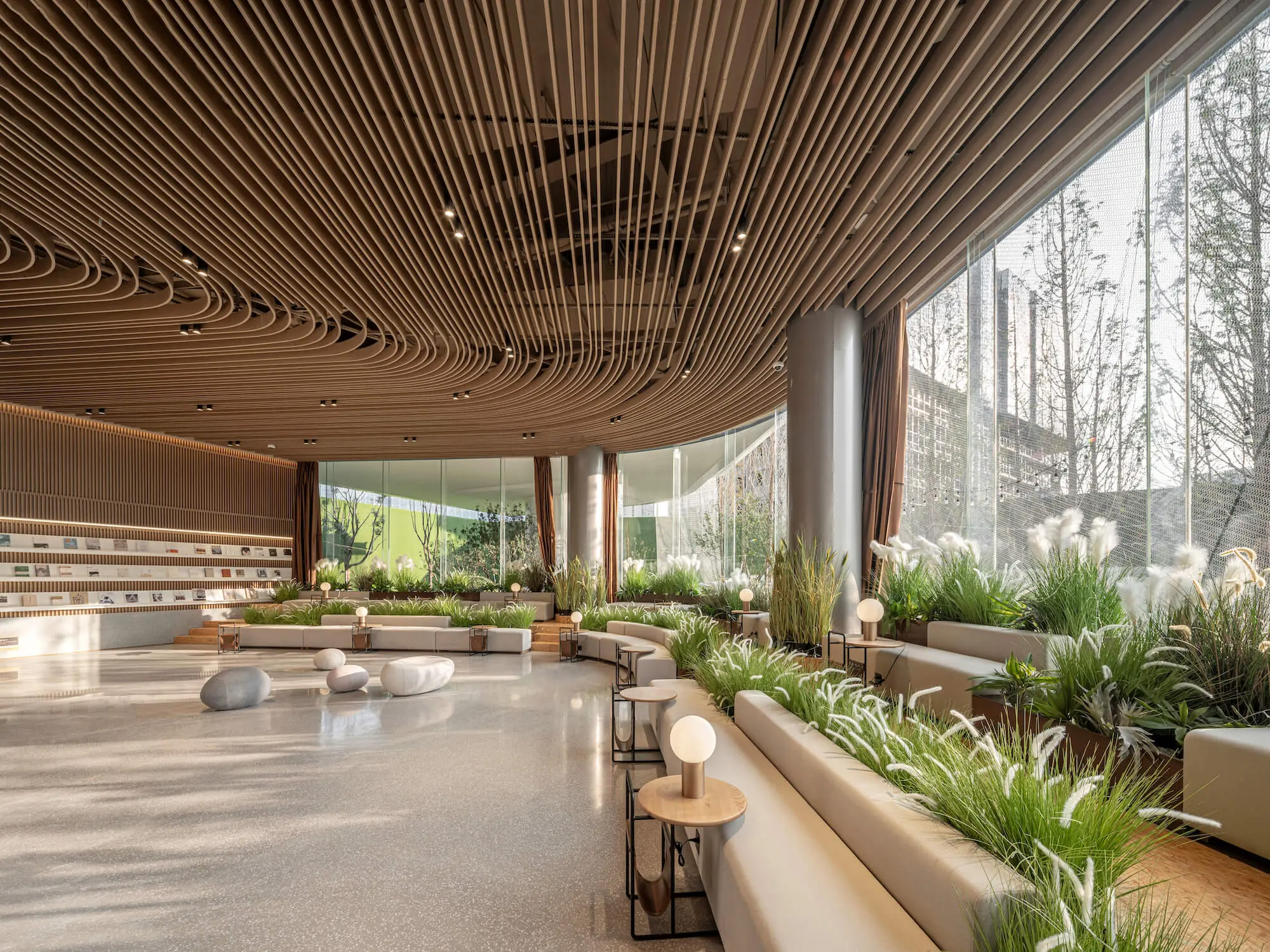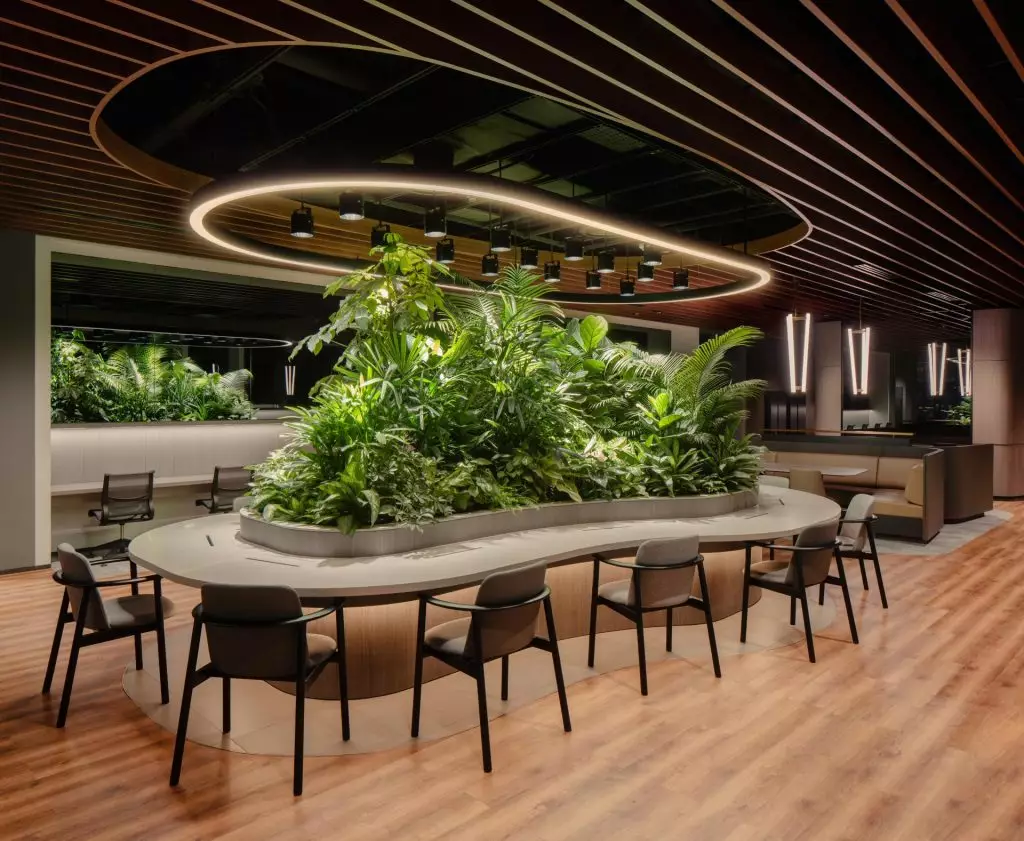As a professional author who spends long hours at my desk, I have come to realize the importance of having a green workspace. A non-green workspace can have negative effects on both productivity and health. The lack of nature and natural elements in our work environment can lead to feelings of stress, fatigue, and decreased focus. It is essential to incorporate nature into our workplaces to create a healthier and more productive atmosphere.
Summary
Greening your workspace through biophilic design can boost productivity.
Biophilic design incorporates natural elements into the workplace to improve well-being.
Benefits of biophilic design include reduced stress, improved creativity, and increased job satisfaction.
Incorporating biophilic design elements can be as simple as adding plants or natural lighting.
Successful case studies show that biophilic design can be implemented in a variety of workplaces, but challenges may arise in implementation.
What is Biophilic Design and How Does it Work?
Biophilic design is an innovative approach that seeks to reconnect humans with nature by incorporating natural elements into the built environment. It recognizes our innate connection with the natural world and aims to create spaces that mimic or evoke nature’s patterns, forms, and processes.
Biophilic design works by engaging our senses through various elements such as plants, water features, natural materials, sunlight, views of nature, and even sounds of birds chirping or flowing water. These elements help improve productivity by reducing stress levels, increasing creativity and focus while promoting overall well-being.
Examples of biophilic design elements include living walls covered in lush greenery that not only provide visual appeal but also improve air quality; indoor gardens or atriums that bring in natural light; use of organic materials like wood or stone for furniture; incorporation of water features such as fountains or aquariums; artwork depicting scenes from nature; and even virtual reality experiences that simulate being outdoors.
The Benefits of Biophilic Design in the Workplace

The benefits of incorporating biophilic design into the workplace are numerous. Firstly, it has been shown to increase productivity significantly. Studies have found that employees working in environments with biophilic design reported higher levels of concentration and task performance compared to those working in traditional office settings devoid of natural elements.
Furthermore, biophilic design has been linked to improved mental health outcomes among employees. Exposure to nature has been found to reduce stress levels, anxiety, and symptoms of depression. It also promotes a sense of calmness and relaxation, leading to improved overall well-being.
In addition to mental health benefits, biophilic design can also have positive effects on physical health. The presence of plants and natural elements in the workspace has been shown to improve air quality by reducing pollutants and increasing oxygen levels. This can lead to a decrease in respiratory issues such as allergies or asthma.
Moreover, incorporating biophilic design into the workplace can help reduce stress-related absenteeism. Employees who work in environments with natural elements are less likely to take sick leave due to stress-related illnesses. This not only benefits the employees but also the company as it leads to increased productivity and reduced healthcare costs.
Lastly, embracing biophilic design is not only beneficial for individuals but also for the environment as a whole. By incorporating sustainable materials and practices into our workspaces, we contribute towards reducing our carbon footprint and promoting environmental stewardship.
Incorporating Biophilic Design Elements in Your Workspace
Incorporating biophilic design elements into your workspace doesn’t have to be complicated or expensive. There are several simple tips that you can follow:
1) Bring in plants: Adding potted plants or hanging planters is an easy way to introduce nature into your workspace. Plants not only improve air quality but also provide visual appeal and a sense of tranquility.
2) Use natural materials: Opt for furniture made from organic materials like wood or bamboo instead of synthetic ones. Natural textures create a more calming environment.
3) Maximize natural lighting: Position your desk near windows if possible, allowing ample sunlight into your workspace. Natural light has been proven to enhance mood, productivity, and overall well-being.
4) Create views of nature: If you don’t have access to outdoor views from your workspace, consider using artwork depicting scenes from nature or installing a nature-themed screensaver on your computer.
5) Incorporate water features: If feasible, add a small tabletop fountain or an aquarium to your workspace. The sound and sight of flowing water can have a calming effect and improve focus.
Case Studies: Successful Implementation of Biophilic Design in Workplaces

Numerous companies have successfully implemented biophilic design principles in their workplaces, reaping the benefits for both employees and the company as a whole. One such example is Amazon’s Spheres in Seattle, which houses over 40,000 plants from around the world. The Spheres provide employees with access to nature throughout their workday, promoting creativity and well-being.
Another notable case study is Google’s headquarters in California known as the Googleplex. The campus features extensive green spaces with walking paths, outdoor seating areas, and even vegetable gardens where employees can relax and connect with nature during breaks. This biophilic design approach has been credited with fostering innovation and collaboration among Google’s workforce.
Overcoming Challenges in Implementing Biophilic Design
While incorporating biophilic design into workplaces offers numerous benefits, there are some challenges that organizations may face during implementation. One common challenge is limited space or budget constraints. However, even small changes like adding potted plants or using natural materials for furniture can make a significant difference without breaking the bank.
Another challenge is resistance to change from employees who may be accustomed to traditional office settings. To overcome this challenge, it is crucial to educate employees about the benefits of biophilic design and involve them in decision-making processes regarding workspace improvements.
Additionally, finding ways to maintain living elements such as plants requires ongoing care and maintenance efforts. Organizations need to allocate resources for regular watering, pruning, and replacing plants when necessary.
The Future of Biophilic Design in the Workplace
The incorporation of biophilic design principles into workspaces has gained significant momentum in recent years, and it is likely to continue growing as more organizations recognize the benefits it offers. The positive impact on productivity, mental and physical health, as well as the environment, makes biophilic design an attractive option for companies looking to create healthier and more sustainable work environments.
As a professional author who values my well-being and productivity, I have personally experienced the transformative effects of incorporating nature into my workspace. The calming presence of plants, natural light streaming through my window, and the soothing sound of a small tabletop fountain have all contributed to creating a harmonious work environment that enhances my creativity and focus.
In conclusion, greening our workspaces through biophilic design is not just a passing trend but rather an essential aspect of creating healthy and productive workplaces. By embracing nature in our work environments, we can improve our overall well-being while also contributing towards a more sustainable future. So let’s bring nature indoors and reap the benefits that biophilic design has to offer!